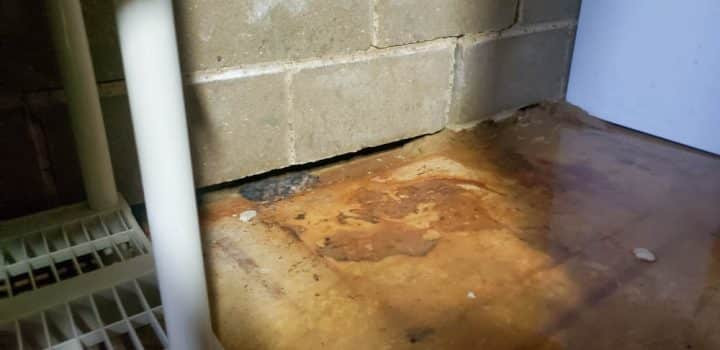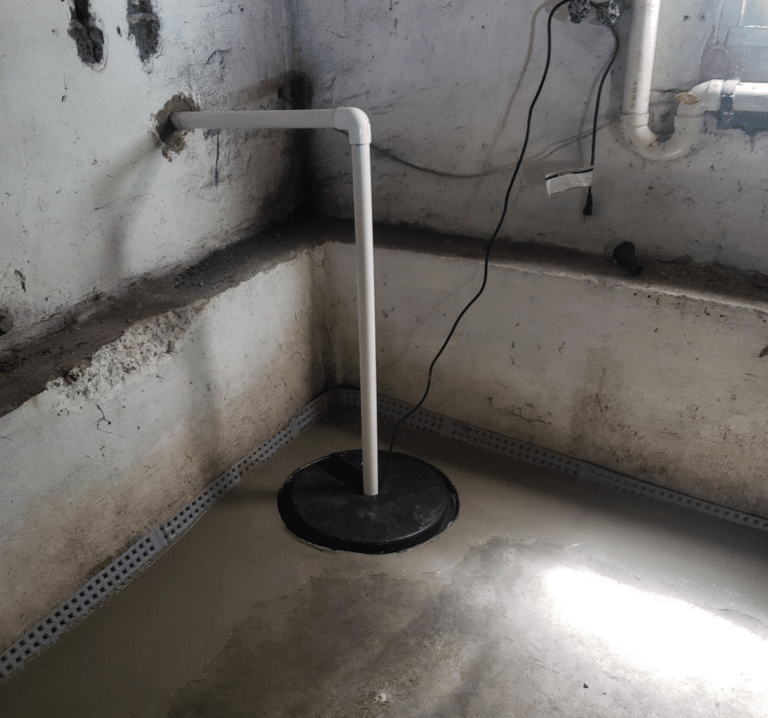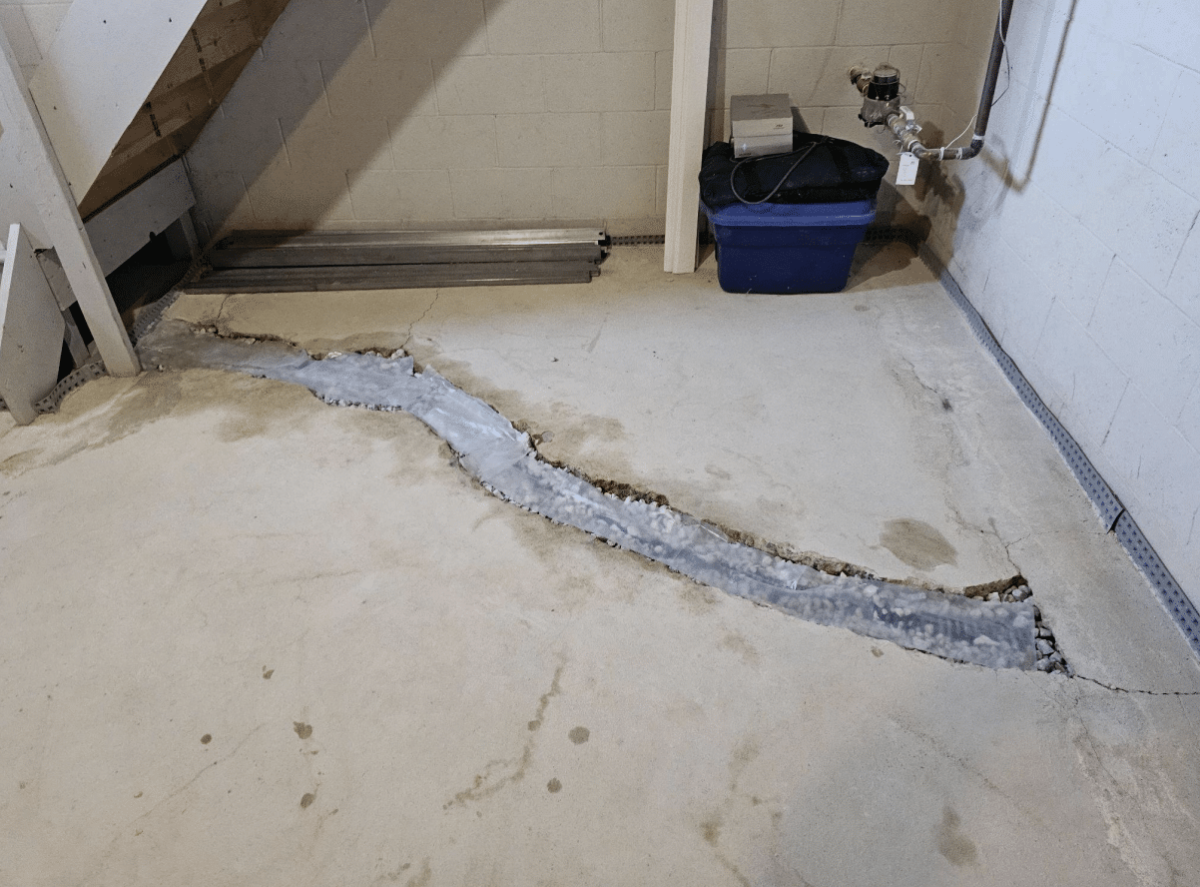How to Spot Basement Water Problems Before They Become Costly Repairs
Hamilton Township, United States - September 11, 2025 / Jeffries Basement Waterproofing /
Have you ever noticed a musty smell or damp spots in your basement? Maybe you’ve seen white, powdery deposits on the walls or come across unexplained cracks? These are signs that your basement might require waterproofing. It’s crucial to address such issues promptly as they can lead to more severe structural damage. Now, wouldn’t you want to know how to spot these signs and what actions you can take to protect your home? Let’s dive into the tell-tale signs that your basement could use waterproofing.
Key Takeaways
- Visible water pools and damp spots in your basement indicate ineffective drainage and possible water seepage.
- The presence of mold and mildew shows moisture problems requiring attention and potential waterproofing.
- Persistent musty odors and high humidity levels in the basement often signal hidden moisture issues.
- Cracks in the basement walls and floors can be signs of potential waterproofing needs and possible structural issues.
- Regular inspections revealing potential leaks and moisture buildup suggest a need for waterproofing to prevent extensive damage.
Recognizing Water Damage Signs
In the world of basement maintenance, recognizing water damage signs is the first crucial step towards tackling dampness issues. You need to keep an eye out for these signs if you want to prevent extensive harm to your home’s foundation.
The first thing you’ll want to notice is any visible water. Pools or trickles of water are clear indicators that your basement isn’t effectively draining water. In such cases, considering basement drainage upgrades is a smart move.
Next, look for damp spots on floors, walls, or ceilings. These are usually tell-tale signs that water is seeping into your basement. It’s a clear indication that waterproofing methods need to be employed promptly.
Cracks on walls, floors, or at the corners of windows and doors might seem small, but they can lead to substantial water damage. These cracks can allow water to seep in, exacerbating dampness issues and potentially causing structural damage.
And finally, if you notice any efflorescence – a white, powdery deposit of water-soluble salts – on your basement walls, it’s a clear sign that water is evaporating within your basement.
Unpleasant Musty Odors
An unpleasant, musty odor is often the unwelcome guest that clues you into a dampness issue in your basement. This smell is more than just an annoyance; it’s a warning sign.
If you’re noticing a persistent scent that reminds you of wet socks or stale air, you’re likely dealing with hidden moisture.
Odor sources aren’t always visible. Leaky pipes behind walls or a small crack allowing moisture in can be difficult to detect.
Unfortunately, these unseen culprits can cause a musty smell to permeate your basement.
That’s where odor prevention comes in. Regularly inspect your basement for signs of water intrusion.
Look for wet spots or discoloration on walls and flooring. It’s also wise to maintain your home’s exterior drainage systems to prevent water from getting in.
Mold and Mildew Presence
Silent invaders, mold and mildew, are clear indicators that your basement needs waterproofing. Their presence isn’t just an aesthetic issue; it’s a glaring sign of a moisture problem. You see, mold growth thrives in damp environments. And when it’s in your basement, it’s a surefire sign that water is finding its way in.
Now, you might be thinking, “I’ll just get some mildew treatment and be done with it.” But unfortunately, it ain’t that simple. Mildew treatment might get rid of the visible issue, but it doesn’t address the root cause. Without tackling the moisture problem, you’re just providing a temporary solution. The mold and mildew will likely return, and with them, the potential risk to your home’s structure and your family’s health.
This is where waterproofing comes into play. It’s not just about making your basement look clean and fresh. It’s about making sure your home is safe, secure, and mold-free.
Wall and Floor Cracks
You’ve tackled mold and mildew, now let’s turn our attention to another telltale sign of water damage – wall and floor cracks.
It’s important to know how to spot these as they can greatly impact the integrity of your basement.
This section will help you identify different types of basement cracks and understand the implications of floor cracks on your home.
Identifying Basement Cracks
Cracks in your basement walls and floors are more than just eyesores. They’re telltale signs that your basement might need waterproofing. It’s essential to identify these cracks early, understand their types, and explore repair options.
The first step is to identify the crack types. Vertical cracks are typically formed due to settling or shrinking of the house. They’re less concerning but shouldn’t be ignored.
Horizontal cracks, on the other hand, may indicate serious structural issues. They’re usually caused by external pressure on the walls, like expansive soil or water pressure.
Diagonal cracks are a blend of the two, often resulting from differential settling.
After identifying the crack types, you need to consider repair options. Small, non-structural cracks can often be fixed with DIY sealant kits.
But, larger cracks, especially horizontal ones, may require professional attention. These might involve methods like epoxy injections or even wall anchors.
Impact of Floor Cracks
When it comes to your basement’s stability, don’t underestimate the impact of floor cracks. They’re not just unsightly; they can compromise your home’s structural integrity and lead to significant water damage if not addressed promptly.
Crack severity matters a lot. Minor cracks may not pose an immediate threat, but larger, deeper ones can. They can allow water to seep in, creating an ideal environment for mold growth and further damaging your basement.
Consider the following:
- Water intrusion: Cracks can provide an entry point for water, especially during heavy rain or snowmelt. This can lead to a damp, musty basement and potential water damage to walls and possessions.
- Structural issues: Over time, unattended cracks can widen, destabilizing your home’s foundation. This poses a significant safety risk and can be costly to repair.
- Decreased property value: If you’re planning to sell, visible floor cracks can deter potential buyers and lower your property value.
Your repair options will depend on the crack’s size, location, and severity.
It’s best to consult with a professional waterproofing company to assess the situation and provide a suitable solution.
Don’t wait until it’s too late; act now to protect your home.
Persistent Humidity Issues
If you’re noticing unusual dampness or condensation in your basement, it could be a sign of persistent humidity issues.
You might also encounter a musty smell, which is often a red flag for high moisture levels.
Don’t overlook signs of mold and mildew, as they thrive in damp environments and indicate the need for basement waterproofing.
Unusual Dampness and Condensation
Often, you might notice an unusual dampness or condensation in your basement. This is a clear sign that your basement needs waterproofing.
It’s not just about the discomfort this dampness creates; it’s also about the potential damage it can cause to your home. If left unchecked, this damp environment can lead to structural damage and the growth of mold and mildew.
Why does this happen? It’s often due to poor humidity control. Your basement, being below ground level, is naturally prone to higher humidity levels. But, when you’re seeing excessive dampness or condensation, it’s a sign that your current humidity control methods aren’t working.
So, what should you do? Here are three steps:
- Check Your Humidity Levels: Use a hygrometer to measure the humidity levels in your basement. Anything above 60% is considered high and needs addressing.
- Install Moisture Barriers: These can be installed on your basement walls and floors to prevent moisture seeping in from the ground.
- Use a Dehumidifier: If your humidity levels remain high even after installing moisture barriers, a dehumidifier can help to reduce the moisture in the air.
Musty Basement Odors
Creeping into your senses, a musty odor in your basement signals more than just an unpleasant smell. It’s a symptom of persistent humidity issues, indicating that your basement may need waterproofing. Musty basement odors can be caused by a variety of issues, including poor basement ventilation and water leaks.
Odor removal is a crucial step in rectifying this problem. You can’t ignore these odors; they’re a sign that something’s not right. You need to take action to improve your basement’s atmosphere.
Here’s a quick guide to help you understand more:
| Cause | Effect | Solution |
|---|---|---|
| Poor Ventilation | Trapped moisture leads to musty odors | Improve basement ventilation |
| Water Leaks | Moisture buildup enhances musty smells | Fix leaks and waterproof your basement |
| Lack of Regular Cleaning | Dust and dirt can contribute to the musty smell | Regular cleaning and dehumidifier use |
Mold and Mildew Presence
An alarming number of homeowners deal with the presence of mold and mildew in their basements.
This isn’t just an aesthetic issue; it’s a serious health risk that can lead to respiratory problems and allergies. If you’re noticing mold and mildew, it’s a glaring sign that your basement needs waterproofing.
Here’s why and how:
- Persistent Humidity: Your basement’s humidity level should be below 50%. Anything higher, and you’re asking for mold and mildew.
Invest in a quality dehumidifier to help control the moisture.
- Mold Removal: If mold has already set up shop, you need to evict it promptly.
Professional mold removal services can ensure that it’s completely eradicated, preventing regrowth and protecting your health.
- Mildew Prevention: After the mold removal, focus on mildew prevention.
Regular cleaning, good ventilation, and waterproofing can prevent mildew from returning.
Frequent Basement Flooding
If your basement’s turning into a mini lake every time it rains, you’ve got a serious problem on your hands. Frequent basement flooding is a telltale sign that your home needs waterproofing solutions. This isn’t just about water damage to your possessions; it’s also about the safety and structural integrity of your home.
You’re probably thinking, “I can just clean up the water every time it floods”, right? Wrong. Each flood takes a toll on your basement’s foundation, and over time, this can lead to serious structural issues.
Moreover, constant flooding creates a damp environment that encourages mold and mildew growth, posing health risks to your family.
What you need is a permanent solution. Waterproofing solutions and drainage improvements are key. Waterproofing not only keeps water out but also reduces humidity levels, making your basement a less hospitable place for mold and mildew.
On the other hand, drainage improvements ensure that water is directed away from your home, preventing it from seeping into your basement.
Don’t let your basement’s frequent flooding go unaddressed. It’s time to take action and safeguard your home.
Frequently Asked Questions
What Are the Potential Health Risks of a Damp Basement?
Ignoring a damp basement can lead to severe health risks.
You’re inviting mold growth, which can trigger allergies and cause respiratory issues. You may experience constant coughing, sneezing, and difficulty breathing. If you’ve asthma, it may worsen.
Also, prolonged exposure to mold can cause infections in your lungs.
Does Insurance Cover Basement Waterproofing?
You’re probably wondering if insurance covers basement waterproofing. It’s not a simple yes or no answer.
You’ll need to examine your insurance policies closely. Residential insurance typically covers sudden and accidental water damage, but preventive measures like waterproofing mightn’t be included.
There are coverage limits too. It’s best to check with your insurance provider to understand what’s covered.
Don’t assume, always verify. It’s your pocket at the end of the day!
How Much Does Professional Basement Waterproofing Cost?
You’re probably wondering, “how much does professional basement waterproofing cost?”
It’s not a simple answer as cost factors can vary. The price depends on the extent of the problem, the square footage of your basement, and the professional services you choose.
Typical costs range from $3,000 to $10,000.
Remember, you’re not just paying for a service, you’re investing in the longevity of your home.
It’s wise to get multiple estimates to ensure a fair deal.
What Is the Best Time of Year to Waterproof a Basement?
You’re wondering about the best time of year to waterproof a basement.
Well, seasonal considerations play a big part. Ideally, you’d tackle this project in late spring or early summer.
Why? Because the ground’s not too hard or too soft, providing ideal conditions for the work.
Plus, it’s before heavy autumn rains that could exacerbate any existing issues.
Are There DIY Options for Basement Waterproofing?
Yes, there are DIY options for basement waterproofing.
You’ll need to research various waterproofing materials and techniques. Start by identifying problem areas, then clean and prepare the surfaces.
Apply a waterproof sealant or paint, often best done in two coats. Some techniques involve installing a drainage system, but that’s more complex.
Don’t ignore water damage signs in your basement. Musty odors, mold, cracks in the walls and floor, and persistent humidity are red flags. Don’t let frequent flooding catch you off guard. Regular inspections and prompt action are key. Remember, your home’s safety and protection from water damage depend on it. Don’t wait until it’s too late; waterproof your basement now to prevent costly repairs and maintain your home’s structural integrity.

Contact Information:
Jeffries Basement Waterproofing
100 Horizon Center Blvd
Hamilton Township, NJ 08691
United States
Jermaine Jeffries
(609) 556-4929
https://ihatemywetbasement.com/



